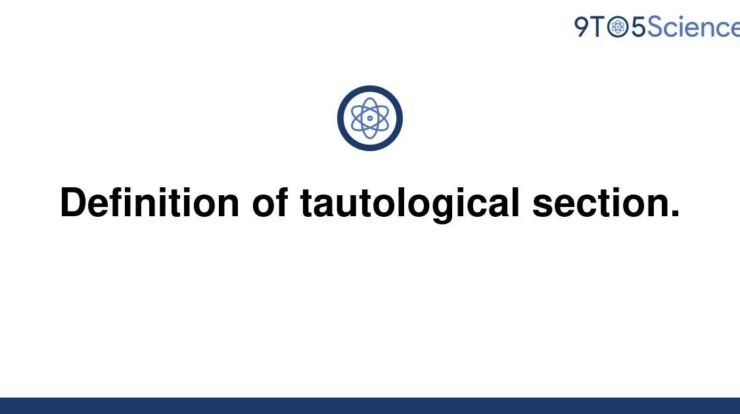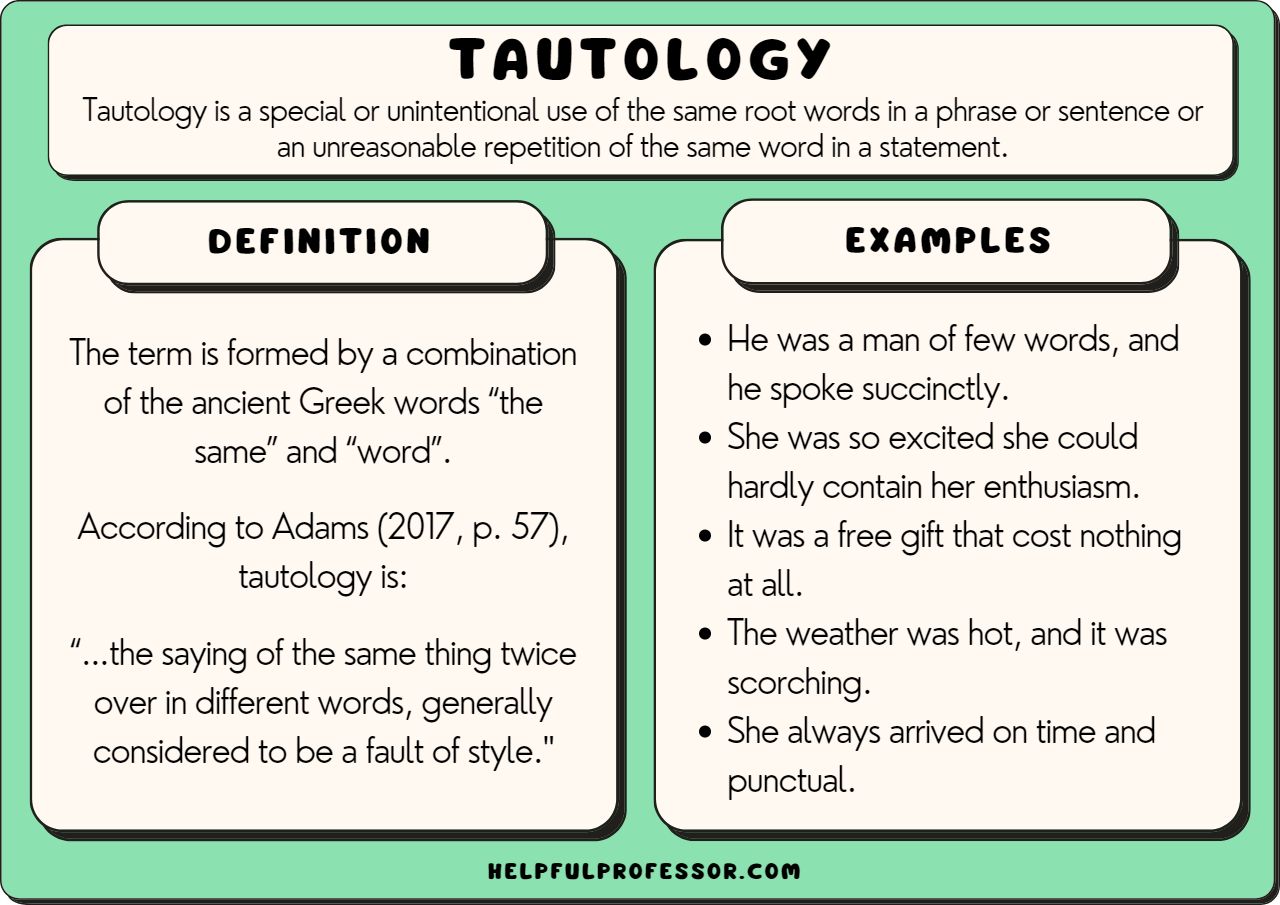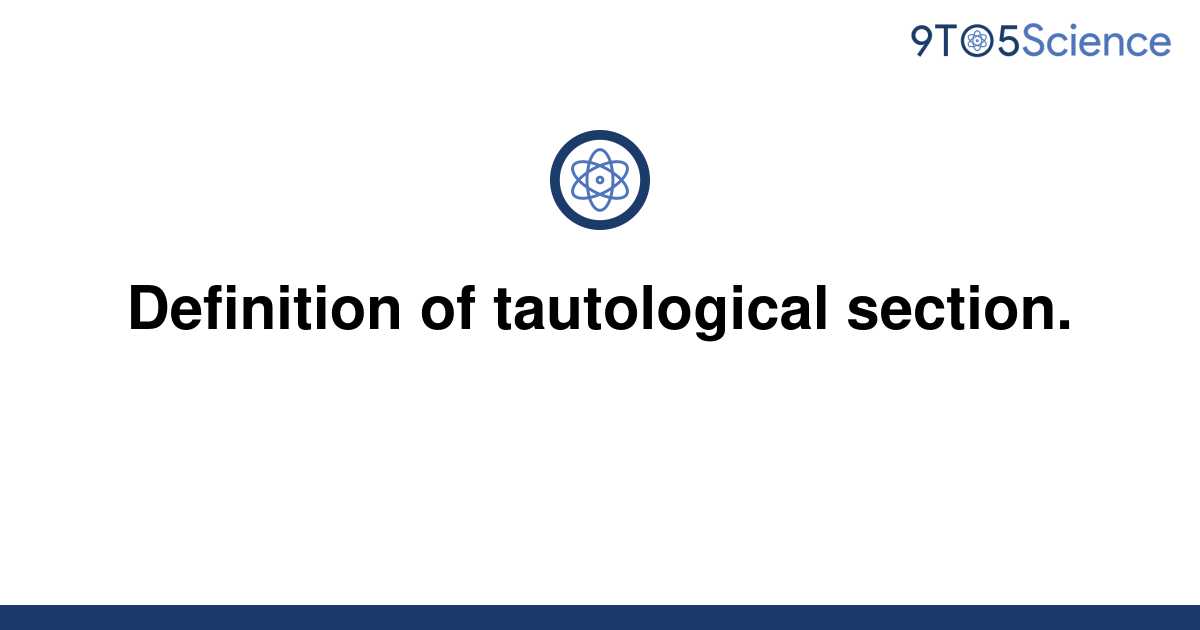
Tautological definitions, characterized by their circular reasoning, are a fascinating linguistic phenomenon. Their purpose and usage extend beyond mere wordplay, as they hold significant implications for communication and understanding.
These definitions, often referred to as “circular” or “tautologous,” provide an explanation that essentially restates the term being defined. By examining examples, methods of identification, and their impact, we delve into the intriguing world of tautological definitions.
Tautological Definition

A tautological definition is a statement that restates the meaning of a word or phrase using different words or a more detailed explanation. The new words or explanation do not provide any additional information beyond what is already implied in the original term.
Tautological definitions are often used to clarify or expand upon a concept, but they can also be used to deceive or confuse readers.
Examples of Tautological Definitions
- Loveis a feeling of deep affection and care for someone.
- Governmentis the group of people who control a country or state.
- Scienceis the study of the natural world and the laws that govern it.
These definitions are all tautological because they simply restate the meaning of the original term using different words.
Methods for Identifying Tautological Definitions
There are a few different ways to identify tautological definitions:
- Look for circular reasoning.Tautological definitions often contain circular reasoning, where the definition of a term is used to explain the term itself.
- Check for synonyms.Tautological definitions often use synonyms to restate the meaning of a term.
- Look for unnecessary detail.Tautological definitions often include unnecessary detail that does not provide any additional information.
Impact and Applications of Tautological Definitions
Tautological definitions can have a negative impact on communication and understanding.
- They can make it difficult to understand the meaning of a term.
- They can be used to deceive or confuse readers.
- They can slow down the communication process.
However, tautological definitions can also be useful in some situations.
- They can be used to clarify or expand upon a concept.
- They can be used to teach new vocabulary.
- They can be used to create a shared understanding of a term.
Alternative Forms of Definitions
There are a number of different types of definitions, including:
- Operational definitionsdefine a term by specifying how it is measured or used.
- Stipulative definitionsdefine a term by assigning it a new meaning.
- Real definitionsdefine a term by referring to its essential nature.
Each type of definition has its own advantages and disadvantages.
Conclusion: Tautological Definition

Tautological definitions, while seemingly straightforward, offer valuable insights into the nature of language and its role in shaping our understanding. They serve as a reminder of the importance of clear and precise communication, highlighting the need to avoid circular reasoning that can hinder effective dialogue.
FAQ Compilation
What is a tautological definition?
A tautological definition is a type of definition that simply restates the term being defined using different words, essentially saying the same thing twice.
What is the purpose of a tautological definition?
Tautological definitions are often used to emphasize or clarify a term, rather than to provide new information.
How can you identify a tautological definition?
Tautological definitions can be identified by their circular nature, where the definition simply restates the term being defined.






